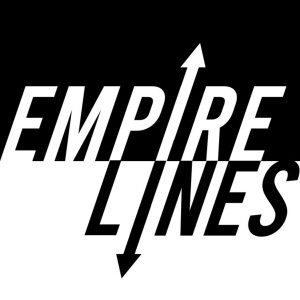
Did You Come Here To Find History?, Nusra Latif Qureshi (2009) (EMPIRE LINES x MK Gallery, The Box)
 2023-11-23
2023-11-23
Curator Hammad Nasar expands ideas of miniature painting, moving around South Asia and Western Europe from the 17th century to now, with Nusra Latif Qureshi’s 2009 digital print scroll, Did You Come Here To Find History?
Beyond the Page, a touring exhibition of South Asian miniatures, is truly historic and historical. At its core are more than 180 detailed, small-scale works on paper, dating from the 16th to the 18th centuries, the time when the Mughal Empire ruled over much of South Asia. But these miniature paintings are borrowed not from contemporary India or Pakistan, but the British Museum in London, the Tate and V&A, and the Royal Collection. So how did this wealth of South Asian miniature paintings come to be held (and hidden away) in Britain’s greatest collections – and what does it mean for this sheer quantity to be here now?
Hammad Nasar, one of the exhibition’s curators, puts these works in conversation with those by leading contemporary artists from South Asia and its diasporas, including Hamra Abbas, Imran Qureshi, Shahzia Sikander, Khadim Ali, and Ali Kazim. We consider their practice across media, highlighting the different forms in which miniature practice lives and lives on, whether in sculpture, film, or architectural installations. Travelling along Nusra Latif Qureshi’s digital-printed scroll, we unpick the layers of portraits, from contemporary passport photographs, to traditional portraits from Venice and Mughal India. With a miniature painting of Saint Rabia, the first female saint in Sufi Islam, Hammad also highlights how women and the body have been represented in Islamic cultures, pluralising perspectives on the past.
Connecting Britain and South Asia, we consider the foundation of the world-renowned Miniature Department of the National College of Art in Lahore, Pakistan, and how artists have long engaged with a range of non-Western/European media, including Japanese woodblock prints. Hammad defies the marginalisation of miniatures – due to their size, and ‘non-conventional’ means of distribution and display – suggesting that art markets and institutions must ‘grow up’ in their appreciation of the media. We also trace migrations and two-way flows, how courtly and Company paintings influenced well-known Dutch Masters like Rembrandt, to Anwar Jalal Shemza, a multidisciplinary artist of modernist and abstract works. Plus, Hammad talks about the ‘empire-shaped hole’ in British history, and why it is important that we share uncomfortable histories like the legacy of the East India Company to challenge the displacement of empire, as something that happened over there and then.
Beyond the Page: South Asian Miniature Painting and Britain, 1600 to Now runs at MK Gallery in Milton Keynes until 28 January 2024, then The Box in Plymouth in 2024.
For more, you can read my article in gowithYamo: gowithyamo.com/blog/small-and-mighty-south-asian-miniature-painting-and-britain-1600-to-now-at-mk-gallery.
Part of JOURNEYS, a series of episodes leading to EMPIRE LINES at 100.
For more on contemporary miniature painting, hear contemporary artist Maha Ahmed on Where Worlds Meet (2023) at Leighton House in London, on EMPIRE LINES: pod.link/1533637675/episode/fef9477c4ce4adafc2a2dc82fbad82ab
WITH: Hammad Nasar, curator, writer and researcher. He is Senior Research Fellow at the Paul Mellon Centre for Studies in British Art, London, where he co-leads the London, Asia Programme, and co-curator of the British Art Show 9 (2020–2022). He is the co-curator of Beyond the Page, an exhibition supported by the Bagri Foundation.
ART: ‘Did You Come Here To Find History?, Nusra Latif Qureshi (2009)’.
PRODUCER: Jelena Sofronijevic.
Follow EMPIRE LINES on Instagram: instagram.com/empirelinespodcast
And Twitter: twitter.com/jelsofron/status/1306563558063271936
Support EMPIRE LINES on Patreon: patreon.com/empirelines
More Episodes
 2022-08-04
2022-08-04
 2022-07-07
2022-07-07
 2021-12-30
2021-12-30
Create your
podcast in
minutes
- Full-featured podcast site
- Unlimited storage and bandwidth
- Comprehensive podcast stats
- Distribute to Apple Podcasts, Spotify, and more
- Make money with your podcast
It is Free
- Privacy Policy
- Cookie Policy
- Terms of Use
- Consent Preferences
- Copyright © 2015-2024 Podbean.com





